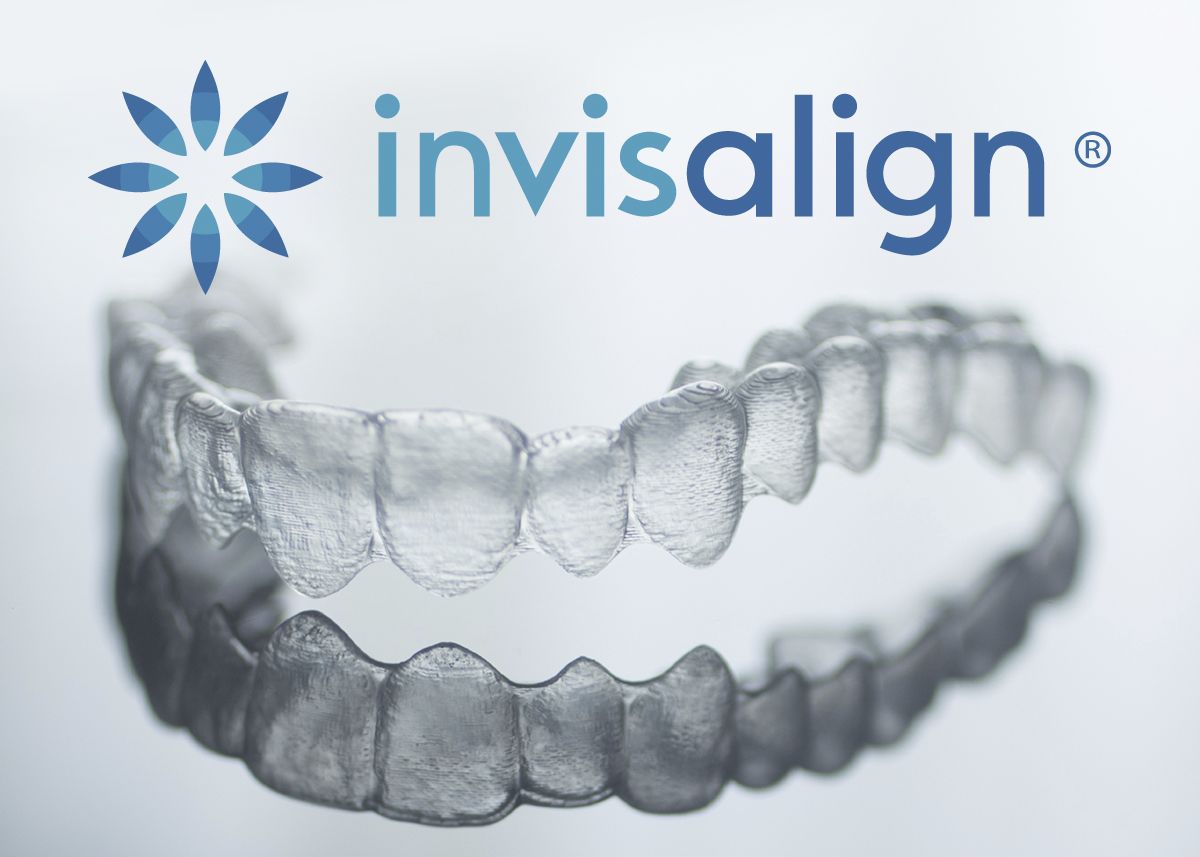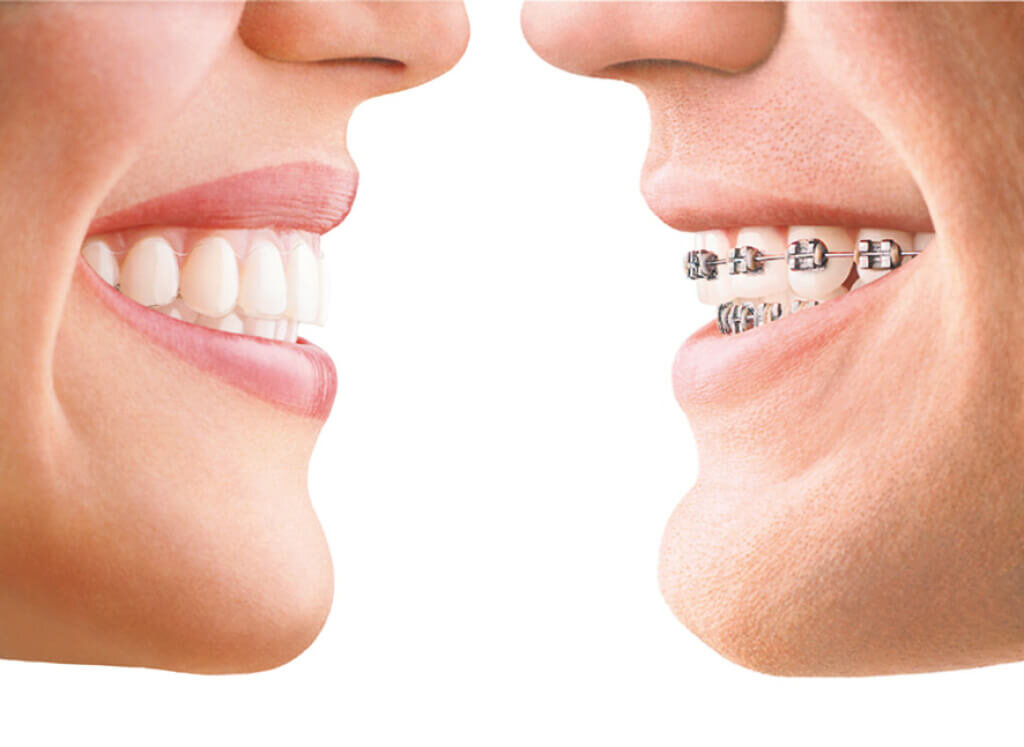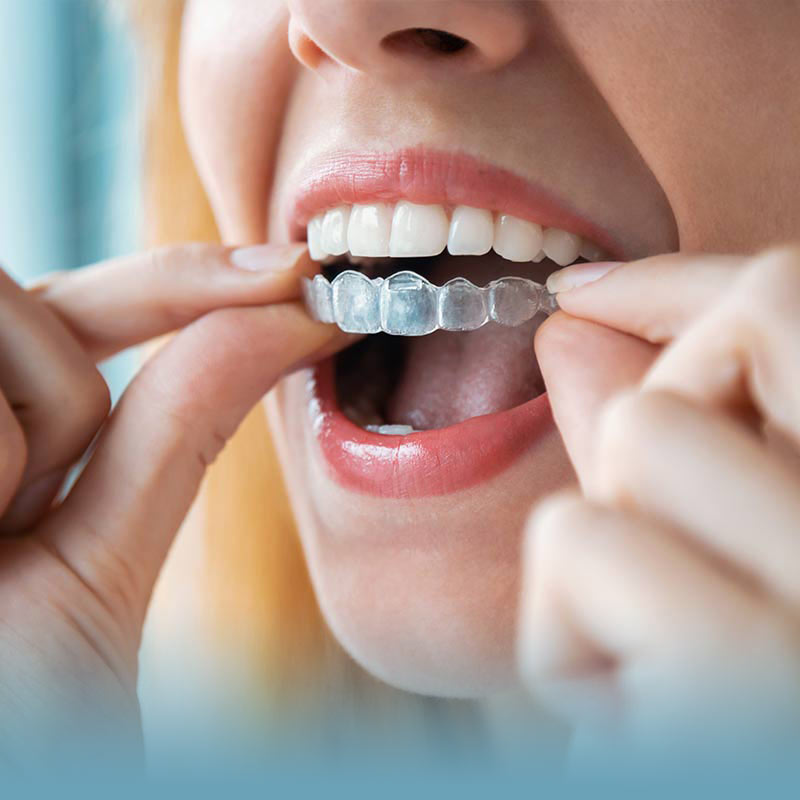How Invisalign Functions: Your Overview to Clear Aligners and Their Effectiveness
Wiki Article
Invisalign vs. Standard Dental braces: Which Alternative Is Right for You?
When thinking about orthodontic treatment, the option in between Invisalign and conventional braces offers a number of crucial variables that warrant careful analysis. Invisalign provides a discreet choice with detachable aligners, while standard dental braces give a much more noticeable yet efficient option for severe imbalance.Overview of Therapy Alternatives

In contrast, standard dental braces include steel brackets and cables that are bound to the teeth. This approach applies continuous stress over time to accomplish placement. While reliable for complicated orthodontic concerns, conventional braces require normal check outs for modifications and can posture challenges in preserving oral hygiene as a result of the difficulty of cleaning about cables and brackets.
Both alternatives have their benefits, and the choice typically pivots on certain dental problems, way of life choices, and patient compliance. Inevitably, consulting an orthodontic professional is essential for identifying the most suitable therapy strategy tailored to individual demands. Comprehending the subtleties of each option can significantly influence the overall success of orthodontic therapy.
Visual Factors To Consider
A significant element influencing the selection in between Invisalign and typical dental braces is the aesthetic charm each therapy provides. Invisalign aligners are crafted from clear plastic, making them virtually unseen when used. This very discreet look is especially attracting teens and adults that may feel awkward concerning their orthodontic treatment. The capacity to maintain a natural smile throughout the alignment procedure can significantly boost the individual's confidence in social and specialist settings.On the other hand, conventional dental braces include steel braces and cords, which can be extra obvious. While advancements in orthodontic modern technology have led to the advancement of smaller sized brackets and tinted elastics, standard braces still maintain an even more obvious account. For some people, the exposure of dental braces might prevent them from looking for necessary treatment.
Ultimately, the selection in between Invisalign and typical braces may pivot on personal choices regarding looks. Patients that prioritize discretion typically favor Invisalign, while those who are less worried regarding presence may choose traditional braces. Recognizing the aesthetic ramifications of each choice is essential for making an educated decision that aligns with one's lifestyle and choices.
Convenience and Convenience

In regards to benefit, Invisalign aligners are detachable, allowing people to appreciate their favored foods without limitation and maintain ideal dental health. Brushing and flossing are streamlined, as the aligners can be gotten throughout these regimens, More Help whereas typical dental braces call for mindful navigating around cables and brackets.
In contrast, traditional dental braces require routine modifications, making them much less practical for those with hectic schedules. In general, the convenience and benefit of Invisalign make it an appealing selection for lots of individuals looking for orthodontic therapy.
Therapy Duration and Effectiveness
While both Invisalign and conventional dental braces are effective in dealing with oral imbalances, the duration of therapy can differ dramatically in between both alternatives. Usually, Invisalign therapy can take anywhere from 12 to 18 months, depending upon the complexity of the instance. The clear aligners work by progressively changing teeth right into their desired settings, and normal follow-ups with an orthodontist aid make sure progression remains on track.
On the other hand, conventional braces often need a longer dedication, normally ranging from 18 months to three years. This is because of their fixed nature and the usage of braces and cords, which can be more efficient for complex situations and extreme misalignments (Invisalign). The treatment performance of typical dental braces is well-documented, as they permit precise modifications and higher control over tooth movement
Ultimately, the selection between Invisalign and conventional braces might depend upon both the anticipated treatment duration and the specific oral concerns available. Consulting with an orthodontist is crucial, as they can navigate to this site provide tailored recommendations based upon private needs, ensuring the selected approach lines up with desired timeframes and outcomes.
Cost Comparison and Insurance Coverage Choices
Cost plays a significant role in the decision-making process for people thinking about orthodontic treatment, whether going with Invisalign or traditional braces. Usually, the cost of Invisalign arrays from $3,000 to $8,000, while conventional dental braces typically cost in between $2,000 and $6,000. Elements affecting these expenses consist of the complexity of the instance, the period of therapy, and geographical place.Insurance protection can considerably influence out-of-pocket expenses. Several dental insurance coverage plans give partial protection for orthodontic treatments, however the specifics can vary widely. It is important for clients to review their insurance coverage to identify the level of protection for either option. Typically, conventional dental braces may be more frequently covered by insurance policy plans compared to Invisalign, which some insurance firms categorize as a cosmetic procedure.
In addition, several orthodontic practices supply adaptable settlement plans, making both treatment choices extra easily accessible. Clients should ask about potential funding alternatives and discounts for ahead of time payments. Reviewing the complete price, including insurance advantages and layaway plan, is crucial for making an informed choice that straightens with both visual preferences and spending plan factors to consider.

Conclusion
In summary, the choice in between Invisalign and traditional dental braces hinges on multiple factors, consisting of visual choices, convenience, treatment period, and price. Invisalign offers a discreet, detachable alternative that promotes oral hygiene and nutritional flexibility, while standard dental braces may be preferable for complicated dental concerns and typically come at a lower price point. Eventually, examination with an orthodontist is essential to analyze private situations and identify one of the most suitable treatment alternative for attaining optimum dental placement.When thinking about orthodontic therapy, the option between Invisalign and traditional braces provides numerous important aspects that merit careful analysis.Comparing Invisalign and standard braces reveals distinctive treatment choices for orthodontic modification.While both Invisalign and typical dental braces are efficient in correcting oral misalignments, the duration of therapy can differ considerably between the 2 options.Price plays a substantial function in the decision-making procedure for individuals thinking about orthodontic therapy, whether choosing for Invisalign or typical braces.In recap, the selection in between Invisalign and typical dental braces hinges on several variables, including aesthetic choices, convenience, therapy period, and price.
Report this wiki page